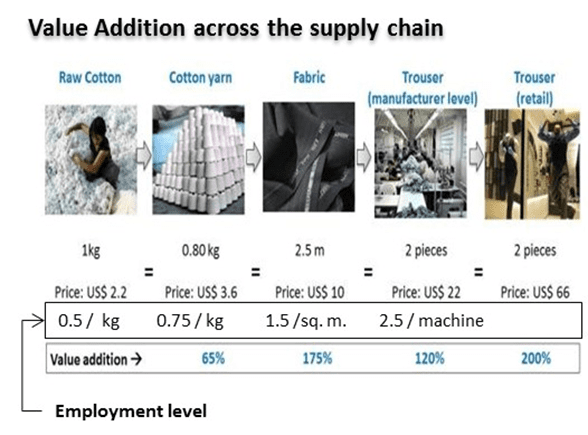Mr. Prashant Agarwal, Jt. Managing Director
Wazir Advisors Pvt. Ltd.
In the textile industry, value addition can be achieved by two methods. Firstly, it is the addition of value to the final product of a manufacturer. If, suppose, the final product is yarn, then value addition can be done by subjecting yarn to different chemical processes. The other method is to try out different blends, doubling of two different types yarns etc. Value-addition is also possible by changing twist and other yarn parameters.
Secondly, a spinner can do value-addition by entering into the realm of the subsequent stages of the value chain. For example, a spinner can acquire weaving facilities and start manufacturing grey cloth or subject it to processing to manufacture processed cloth, which may be converted into made-ups and/or garments.
Thus, the scope for value-addition in the textile industry is tremendous. Manufacturers must keep an eye on the opportunities for value-addition to grab them.
For the second type of VA, the company needs to venture into a new business altogether which requires capex, establishment of new infrastructure, development of associated production and marketing team etc.
For the first type of VA, whereas the investment is not huge but more than Marketing/technical staff alone, the firm’s culture should be oriented towards VA wherein the company nurtures innovation and out of-the-box thinking by its employees. But, of course, the team has to have the right credentials to spot the opportunity and work seamlessly across departments to turn into a reality.
EBIDTA levels for different products:
- Yarn alone 14-15%
- Yarn and Finished Fabric 18-20%
- Garments alone 20-22%
- Garments with fabrics & yarn 25% +


